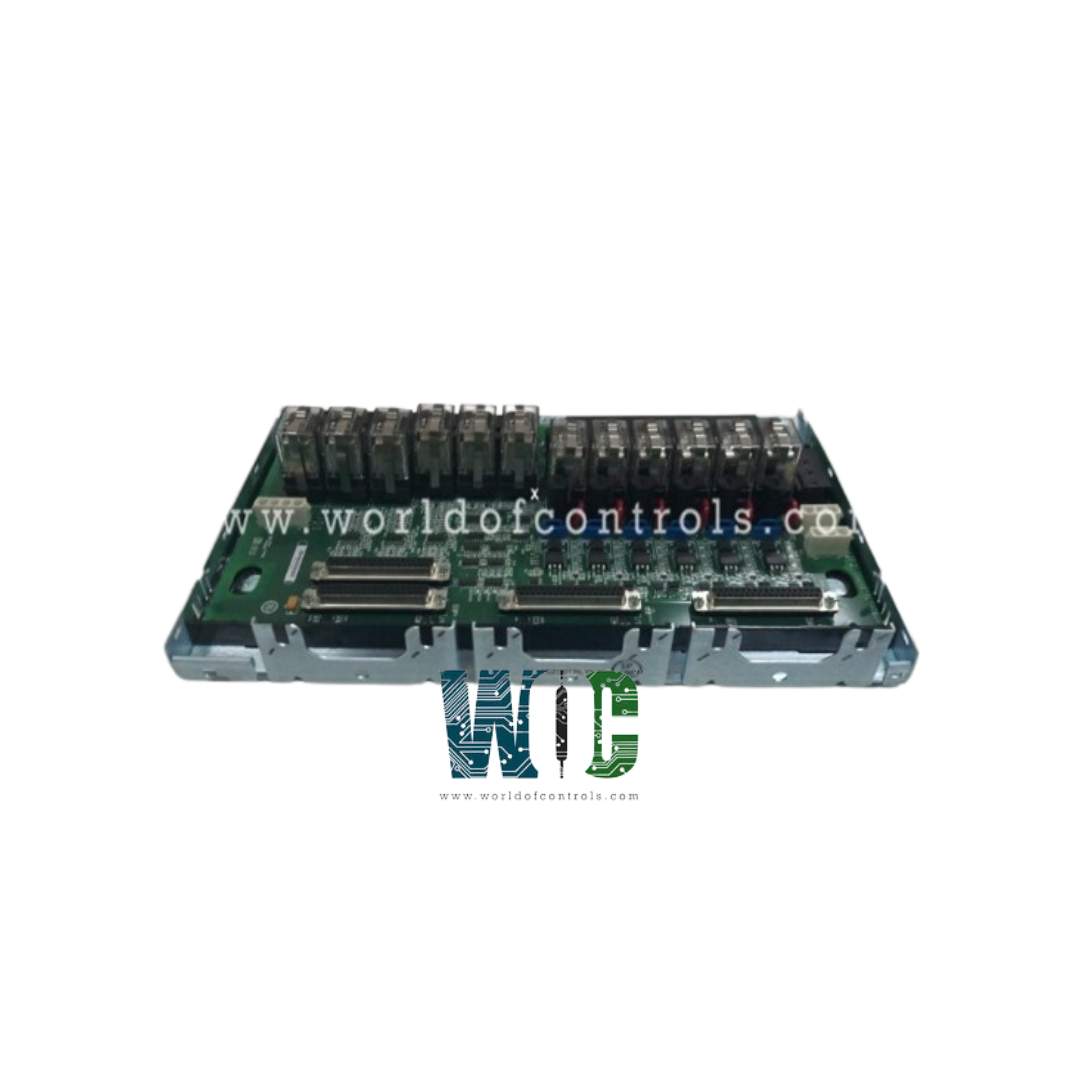SPECIFICATIONS
Part Number: IS230TRLYH3E
Manufacturer: General Electric
Series: Mark VIe
Function: Relay Output Assembly
Size 17.8 cm wide x 33.02 cm high
Temperature -30 to 65oC
Operating humidity: 5 to 95% non-condensing
Availability: In Stock
Country of Manufacture: United States (USA)
Functional Description
IS230TRLYH3E is a Relay Output Assembly manufactured by General Electric. The solid-state Relay Output terminal board is a specialized board designed to provide reliable and isolated relay outputs in industrial applications. This board consists of 12 solid-state relays that serve as the output switches, offering enhanced performance and safety features.
Features
- Solid-State Relays (SSR): Utilizes solid-state relays for its outputs. Solid-state relays are electronic switches that use semiconductor devices, typically thyristors or triacs, to control the flow of current. Unlike traditional electromechanical relays, solid-state relays have no moving parts, providing improved reliability, faster response times, and longer operational lifespans.
- Isolated Output Voltage Feedback: The board features isolated output voltage feedback on all 12 circuits. This means that each output channel has its dedicated voltage feedback, providing independent monitoring and feedback capabilities. Isolation helps prevent interference or cross-talk between the outputs, ensuring accurate and reliable feedback signals for monitoring and control purposes.
- Class 1 Division 2 Certification: The use of solid-state relays allows it to obtain certification for Class 1 Division 2 applications. Class 1 Division 2 refers to hazardous locations where flammable gases, vapors, or liquids may be present under abnormal conditions. This certification ensures that the board meets the safety requirements and standards necessary for operation in these potentially hazardous environments.
Installation Procedure
- Connect the Solenoid Wires: The wires for the 12 solenoids should be connected directly to the I/O terminal block. The specific wiring configuration can be referred to in the provided figure, Terminal Board Wiring. It is essential to ensure the correct placement of the wires according to the designated terminals on the terminal block.
- Secure the Terminal Block: The terminal block is typically held down by two screws to ensure stability and secure connections. These screws are used to fasten the terminal block onto the designated mounting surface or enclosure. The terminal block should be firmly secured to prevent any movement or loosening of the connections during operation.
- Terminal Block Specifications: The terminal block typically features 24 terminals, providing ample space for connecting wires. These terminals are designed to accept wire sizes up to 12 AWG (American Wire Gauge), ensuring compatibility with a range of wire sizes commonly used in industrial applications.
- Consider Polarity: As the dc relays used in the board are unidirectional, it is crucial to exercise caution regarding polarity when connecting the loads to these relays. Pay close attention to the polarity markings and ensure that the positive and negative terminals of the solenoids are correctly connected to the corresponding terminals on the terminal block.
- Shield Terminal Strip: Adjacent to each terminal block, there is a shield terminal strip that is attached to the chassis ground. This strip allows for the proper grounding of shielded cables or wires to reduce electromagnetic interference (EMI) and ensure a reliable and noise-free operation of the system.
- External Power for Solenoids: It's important to note that the solenoids connected to the terminal board must be powered externally. This means that an external power source, such as a separate power supply, should be provided to energize and control the solenoids. The terminal board itself acts as a switching mechanism for the solenoids but does not provide the power required to operate them.
WOC is happy to assist you with any of your automation requirements. For pricing and availability on any parts and repairs contact us.
FREQUENTLY ASKED QUESTIONS
What is IS230TRLYH3E?
It is a Relay Output Assembly manufactured and designed by General Electric
What is the purpose of the solid-state Relay Output terminal board?
The terminal board is designed to provide 12-output relay functionality using solid-state relays. It offers isolated output voltage feedback on all 12 circuits, allowing for precise monitoring and control of the relay outputs.
What is the significance of isolated output voltage feedback on all 12 circuits?
The isolated output voltage feedback means that each of the 12 relay circuits has its dedicated feedback mechanism. This allows for independent monitoring and feedback of the relay outputs. Isolation ensures that signals from one circuit do not interfere with or affect the performance of other circuits, ensuring accurate and reliable feedback information.
What does it mean to be certified for Class 1 Division 2 applications?
The Class 1 Division 2 certification indicates that the board meets the safety requirements for operating in hazardous environments where flammable gases, vapors, or liquids may be present under abnormal conditions. This certification ensures that the terminal board is designed and constructed to prevent the ignition of hazardous substances, making it suitable for use in such environments.
